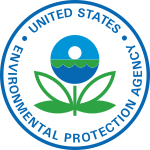**Establishment and History**:
– In the late 1950s and 1960s, public concern about environmental impact led to legislative action.
– The establishment of the EPA in 1970 under the Nixon administration consolidated environmental responsibilities.
– EPA absorbed functions from various departments and inherited multiple sites across states.
– The agency started with a budget of $1.4 billion and 5,800 employees in its first year.
– Significant environmental acts like the Clean Air Act were passed in the 1970s, marking EPA’s regulatory authority.
**Jurisdiction and Responsibilities**:
– EPA is an independent agency operating under the U.S. federal government’s jurisdiction.
– It collaborates with state, tribal, and local governments to enforce national environmental standards.
– EPA conducts environmental assessment, research, education, and enforces national standards under various laws.
– The agency has the authority to impose fines, sanctions, and other enforcement measures.
– EPA collaborates with industries and all levels of government on pollution prevention and energy conservation programs.
**Administration and Leadership**:
– The EPA is led by an administrator appointed by the president and approved by the Senate.
– The current administrator is Michael S. Regan.
– EPA’s budgeted employee level for 2023 is 16,204.1 full-time equivalent (FTE) positions.
– More than half of EPA’s employees are engineers, scientists, and environmental protection specialists.
– The administrator typically holds cabinet rank, although EPA is not a Cabinet department.
**Legislation and Key Programs**:
– Various environmental acts were passed in different decades, such as the Clean Water Act, Safe Drinking Water Act, and Toxic Substances Control Act.
– The EPA has core programs focusing on air quality, radiation protection, and water quality.
– The National Pollutant Discharge Elimination System (NPDES) permit program regulates water pollution.
– EPA issues regulations interpreting statutes and operates major programs established based on laws passed by Congress.
– The agency’s regional offices are responsible for implementing programs in specific states and on Indian Tribal lands.
**Recent Developments and Controversies**:
– The EPA introduced initiatives like the Clean Power Plan and the PFAS Strategic Roadmap in recent years.
– Changes in leadership, such as Scott Pruitt’s appointment and subsequent resignation, have been notable.
– The agency faced controversies over climate change regulations, management issues, and political interference in its work.
– Recent funding allocations, new greenhouse gas standards, and California’s allowance to set stricter auto emissions standards have been key developments.
– EPA’s role in addressing emerging environmental challenges and adapting to regulatory changes remains a focal point.
The Environmental Protection Agency (EPA) is an independent agency of the United States government tasked with environmental protection matters. President Richard Nixon proposed the establishment of EPA on July 9, 1970; it began operation on December 2, 1970, after Nixon signed an executive order. The order establishing the EPA was ratified by committee hearings in the House and Senate.
 Seal | |
Logo | |
 Flag | |
| Agency overview | |
|---|---|
| Formed | December 2, 1970 |
| Jurisdiction | United States federal government |
| Headquarters | William Jefferson Clinton Federal Building Washington, D.C., U.S. 38°53′38″N 77°01′44″W / 38.8939°N 77.0289°W |
| Employees | 14,581 |
| Annual budget | $9,559,485,000 |
| Agency executives |
|
| Website | www |
The agency is led by its administrator, who is appointed by the president and approved by the Senate. The current administrator is Michael S. Regan. The EPA is not a Cabinet department, but the administrator is normally given cabinet rank. The EPA has its headquarters in Washington, D.C.. There are regional offices for each of the agency's ten regions, as well as 27 laboratories around the country.
The agency conducts environmental assessment, research, and education. It has the responsibility of maintaining and enforcing national standards under a variety of environmental laws, in consultation with state, tribal, and local governments. EPA enforcement powers include fines, sanctions, and other measures.
It delegates some permitting, monitoring, and enforcement responsibility to U.S. states and the federally recognized tribes. The agency also works with industries and all levels of government in a wide variety of voluntary pollution prevention programs and energy conservation efforts.
The agency's budgeted employee level in 2023 is 16,204.1 full-time equivalent (FTE). More than half of EPA's employees are engineers, scientists, and environmental protection specialists; other employees include legal, public affairs, financial, and information technologists.
